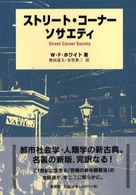基本説明
Miller draws from literature, film, photography, print ads, and music to generate a cultural history of the black dandy, ranging from Mungo Macaroni, a freed slave and well-known dandy on the London social scene in the eighteenth century, to the ways that contemporary visual artists represent the black dandy as an emblem of black cosmopolitanism.
Full Description
Slaves to Fashion is a pioneering cultural history of the black dandy, from his emergence in Enlightenment England to his contemporary incarnations in the cosmopolitan art worlds of London and New York. It is populated by sartorial impresarios such as Julius Soubise, a freed slave who sometimes wore diamond-buckled, red-heeled shoes as he circulated through the social scene of eighteenth-century London, and Yinka Shonibare, a prominent Afro-British artist who not only styles himself as a fop but also creates ironic commentaries on black dandyism in his work. Interpreting performances and representations of black dandyism in particular cultural settings and literary and visual texts, Monica L. Miller emphasizes the importance of sartorial style to black identity formation in the Atlantic diaspora.
Dandyism was initially imposed on black men in eighteenth-century England, as the Atlantic slave trade and an emerging culture of conspicuous consumption generated a vogue in dandified black servants. "Luxury slaves" tweaked and reworked their uniforms, and were soon known for their sartorial novelty and sometimes flamboyant personalities. Tracing the history of the black dandy forward to contemporary celebrity incarnations such as Andre 3000, Miller explains how black people became arbiters of style and how they have historically used the dandy's signature tools-clothing, gesture, and wit-to break down limiting identity markers and propose new ways of fashioning political and social possibility in the black Atlantic world. With an aplomb worthy of her iconographic subject, she considers the black dandy in relation to nineteenth-century American literature and drama, W. E. B. Du Bois's reflections on black masculinity and cultural nationalism, the modernist aesthetics of the Harlem Renaissance, and representations of black cosmopolitanism in contemporary visual art.
Contents
Acknowledgments ix
Introduction. Stylin' Out 1
1. Mungo Macaroni: The Slavish Swell 27
2. Crimes of Fashion: Dressing the Part from Slavery to Freedom 77
3. W. E. B. Du Bois's "Different Diasporic Race Man 137
4. "Passing Fancies": Dandyism, Harlem Modernism, and the Politics of Visuality 176
5. "You Look Beautiful Like That": Black Dandyism and the Histories of Black Cosmopolitanism 219
Notes 291
Bibliography 347
Index 371








